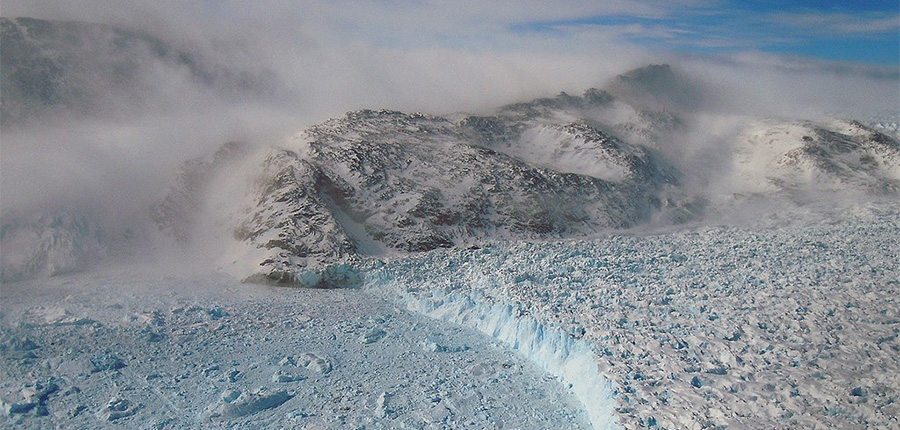 New Method of Gauging Ice-Sheet Movement May Improve Predictions of Sea-Level RiseJune 25, 2018
National Science Foundation NSF-funded researchers at The University of Kansas have devised a new method of gauging how fast the massive ice sheets of Antarctica and Greenland move toward the sea, reducing, they say, "the largest uncertainty" in predicting future sea-level rise. Unlike sea ice that floats on the water's surface, when ice from land-based ice sheets slides into the sea and melts, it contributes to global rise of sea level. Vast amounts of freshwater are locked up in the polar ice sheets. Researchers Leigh Stearns, associate professor of geology and research scientist at CReSIS (Center for Remote Sensing of Ice Sheets), and Cornelis van der Veen, professor of geography, recently published their work in the journal Science. They found that subglacial water pressure, the water pressure between the bottom of the ice sheet and the hard bed underneath, controls the speed of the ice flow, rather, than has been thought since the 1950's, the amount of friction between the ice and rock. Read more in a news release here.
|



For USAP Participants |
For The Public |
For Researchers and EducatorsContact UsU.S. National Science FoundationOffice of Polar Programs Geosciences Directorate 2415 Eisenhower Avenue, Suite W7100 Alexandria, VA 22314 Sign up for the NSF Office of Polar Programs newsletter and events. Feedback Form |

